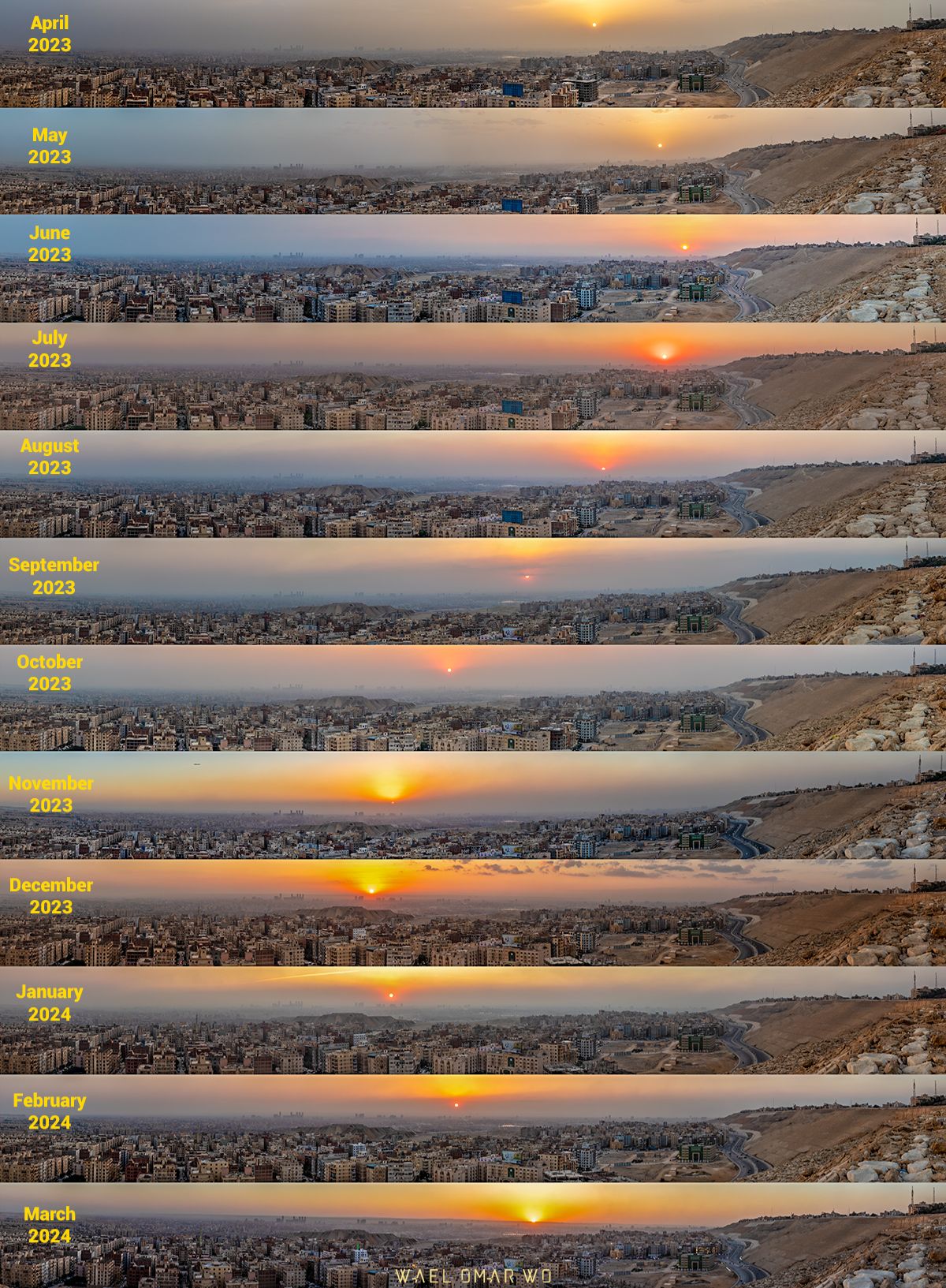EarthSky Community Photos
Submit your photo here. Comment or upvote on photo pages. Search via photographers' names. More improvements coming! To help, please donate.

Cairo, EGYPT
06:06 pm
Settings and equipment:
Canon 200 D18-55 mm canon lens
Each image is a 5-panel mosaic @18mm, each panel is HDR image with bracket shooting.
The settings of the images:
ISO 100, 1/20 seconds, F8. This may differ a little due to different lighting conditions along the 6 months. Date : 21 th (±2) of each month from April 2023 to March 2024.All images are taken from fixed place along the 12 months.
HDR Panorama image stitched in Lightroom and processed in photoshop.
Dears,Good Day.Kindly find attached my image illustrating the change in sunset position during 12 months.The inclination of the Earth's rotation axis causes the seasons and also the position of sunrise and sunset to change every day so the Sun rises due east and sets on due west only twice per year during the equinox but changes its position along the rest of the year.Today 20th March,2024 the Earth's axis is tilted neither toward nor away from the sun, resulting in a "nearly" equal amount of daylight and darkness at all latitudes. I have photographed the sun for 12 months from a fixed place to monitor the path of the sun along the horizon. My first image was in April 2023 and I continue to shoot the sunset on the 21th day (± 2 days) of every month to show the drift of the sunset location. The image shows the summer solstice on 21st of June as the sun sets considerably north of due west. After the summer solstice, the sun's path gradually drifts southward. By 23rd of September, the sun is at equinox, its path is again along the celestial equator and the sun sets directly on due west. The southward drift then continues until the December solstice (22nd of December), when the sun sets considerably south of due west. After the December solstice, the sun's path drifts northward, returning to the celestial equator by the March equinox 20th of March 2024.The maximum angular distance between two sunsets is the angle between the two solstices. This angle changes with the latitude of the place. It is minimum at the equator and after that increases according to the absolute value of the latitude until it causes the midnight Sun in the polar area. In my location at "Mokattam" hills at latitude 30º 00´ 05´´ N the Sun sets in :Summer solstice 21st June @297.9º in 19:59 pmWinter solstice 22nd December @243.2º in 17:00 pmSo the maximum drift distance is 54.7 degrees.As I started from April and ended on March the sun drift looks like a snake in the sky
Settings and equipment:
Canon 200 D18-55 mm canon lens
Each image is a 5-panel mosaic @18mm, each panel is HDR image with bracket shooting.
The settings of the images:
ISO 100, 1/20 seconds, F8. This may differ a little due to different lighting conditions along the 6 months.
Date : 21 th (±2) of each month from April 2023 to March 2024.All images are taken from fixed place along the 12 months.
Choosing the location was so difficult in a very crowded city like Cairo as I wanted to have a wide view of the city and in same time a fixed location not altered by crowd or civil works so I spent too much time to search for this place. The place was above “Mokattam” hills so I have to climb a little up to be in the right spot and facing the sun along its journey during the 12 months. I hope my image could be featured and published in "Earthsky" website and magazine. It would be a great pleasure. Location: Cairo, EGYPT.
Credit: Wael Omar WO/ https://www.instagram.com/waelomar_astrophotography/
Best Regards,
Wael Omar Tel: EGYPT: +201092422445








